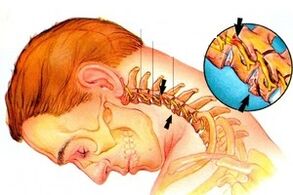
Bone muscle system diseases are one of the most common diseases on Earth.Very few people can avoid them completely, especially after 40 years, although experts admit that spinal, muscle and joint problems have become "younger" and very young people have increasingly complained about the pain.
This is because the lifestyle has become familiar to many people: not working, in a long position (most often behind devices and screens), lack of physical activity.As a result, the posture is disturbed, salt and other harmful substances accumulate in the body, the functions of the skeletal muscle system are interrupted and the consequence is that the internal organs may be deformed.
The most common of these diseases is osteoarthritis, which affects both the elderly and quite young people, and among the degenerative diseases - problems with the lumbar spine and cervical spine.The second most common type of osteoarthritis, cervical, is an unpleasant disease, moreover, it progresses gradually, without treatment the lifestyle will worsen significantly, even to the point of disability.This means that you need to promptly recognize the symptoms of this disease and promptly contact an orthopedist or spine specialist for treatment.
How does cervical spondylosis develop?
If a person has a sedentary lifestyle or a career must be in a position for a long time, the risk of osteoarthritis is very high.As the disease develops, the discs occur changes, they are deformed and structured.
The disc is placed between the vertebrae, their task is to maintain the spine, to make it flexible and durable.There are seven vertebrae in the neck, with the help of the head supported and rotated, the neck is bent.The neck vertebrae are very close to each other, so they are injured and change even from small physical efforts.The danger of the disease is that the nerve ends of the spinal nerves are affected, so the brain's brain vessels are affected.In return, the brain does not receive important substances and this can lead to the development of some other diseases, more serious can cause disability and even death of the patient.
There are many causes and development of cervical joint disease.Among the most common and frequent reasons, the following can be distinguished:
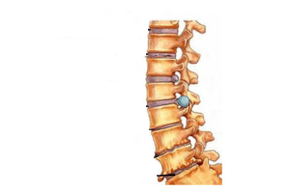
- The metabolism is weakened in the body, especially, in the cervical area, hormonal imbalance;
- Salt deposition;
- Low physical activity, sedentary lifestyle;
- Long is in one position (at the computer, the steering wheel of the car, etc.);
- Improper nutrition;
- Excess weight;
- Injuries and bruises of the neck;
- Lower body temperature.
Osteochondrosis also occurs on the basis of chronic diseases of the musculoskeletal system, such as scoliosis or rheumatism.
In addition, an osteoarthritis often leads to a genetic trend of the body.
But regardless of the cause, osteoarthritis must be treated as soon as its first symptoms appear.
Signs of cervical bones
Osteochondrosis in this spine does not always arise suddenly and suddenly.Usually, it develops slowly and the symptoms intensify over time, their number increases.The more vertebrae are damaged and nerve roots are damaged, the more noticeable the signs.
The first symptom to pay is the pain of different power in the cervical spine, giving other parts of the body - behind the head, forehead, ears, forearms, shoulders, chest, etc.In case of pain, consult your doctor to determine whether it is really bone and joint, often with similar symptoms with other diseases.
Other signs of osteoporosis
- The pain in the neck is enhanced by loads or turns;
- The patient feels numb, burning or tingling in the limbs;
- Common headache and dizziness, weakness, patients may complain about dark circles and spots in the eyes, tinnitus;
- May faint if you turn your head suddenly.
Cervical bone degeneration is also characterized by:
- lack of coordination;
- pain in the heart area;
- Impaired and hearing impairment.
Types of osteoarthritis
Depending on the type of nerves are pinched and the properties of the disease, the doctor distinguishes some syndrome:
- nerve root syndrome;
- vertebral artery syndrome;
- heart syndrome.
The nerve root syndrome is the first pairs of pairs of nerve heads.Feeling of pain in the neck, spreading to the shoulder blades, lower back, shoulders and forearms.
With vertebral artery syndrome, patients have a throbbing pain in the back of the head or temples, or burning pain in the neck, behind the head, severe pain when turning their heads, sleeping, coughing and spreading to the chest and shoulders.
With heart syndrome, initial symptoms are similar to angina, but the pain does not disappear after using nitroglycerin, lasting for a few hours and can be strengthened when moving and deep breathing.
Symptoms of damage to specific vertebrae
The treatment of osteoarthritis is based on the end of the damaged nerve.Only eight of them, each of them lying on the neck vertebra.Which vertebrae can be assaulted by symptoms corresponding to a certain nerve spine.
Damage to the end of neurological and characteristic pain
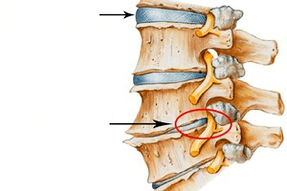
- First and second parts: sensitivity of the back of the head, pain in the parietal and occipital regions is broken;
- The third part: Numbness in the field of compression, impaired speech, sensitivity of language;It rarely happens;
- Fourth Department: Pain and numbness in the collarbone and/or shoulder, violating respiratory system, heart attack;
- Part Five: Shoulder pain, pain on the outer surface of the shoulder, decreased sensitivity of the limbs;
- The sixth and seventh parts: pain in the neck, swords, forearms, back, lower back, sensitivity of the hand, fingers;The most frequent failure;
- Eighth parts: Pain in the neck, back, elbows, paralysis of the small fingers of all limbs, the green of the legs and the brush due to blood circulation disorders, lack of skin sensitivity and put it on the legs.
Diagnosis and treatment of cervical bone
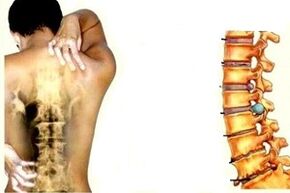
To determine a reliable way of diagnosing "cervical degeneration", you must consult your doctor.Many symptoms of osteoarthritis are similar to signs of other diseases, so it is important not to start treating osteoarthritis on time, but also not missing other diseases.
If suspected of degeneration of cartilage and show signs of pinching nerve ends, the doctor appoints X -ray;If there is not enough data, magnetic resonance images or calculations, doppler ultrasound and parallel scanning.
Based on research data, the nature of pain syndrome and the combination of other symptoms, which can determine which disc is damaged and begins the necessary treatment to restore the spine and the nerve roots, and prevent complications of developing osteoarthritis.
The treatment is prescribed by the doctor, often complicated.First of all, it has to reduce pain symptoms, in the case of degeneration of the neck vertebra sometimes almost unbearable and not only spread to the neck but also spread to other parts of the body.
For this purpose, the tablet analgesics are used, but in case of severe pain, nonsteroidal anti -inflammatory drugs, as well as warm and painful ointments, are indicated.
Because drugs and ointments only relieve pain and other symptoms of neck osteoarthritis, but does not eliminate its cause.After the feeling of pain decreases, the patient is prescribed cool -Accmentation, physiotherapy and physiotherapy.Patients show a diet, medications that improve blood circulation and support the body's functions, in pills and injections, as well as Chondroprotector to help protect and restore the fabric of the discs.
In some cases, bathrooms, paraffin applications, acupressure, hirudom therapy are indicated as additional treatment for patients.Folk treatments for cervical bone often quickly help bring patients back to normal lifestyle, but they should only be used in combination with traditional methods and after consulting a doctor, because traditional medicine can be contraindicated, and its prescription can be harmful to the body.
Complications and disease prevention
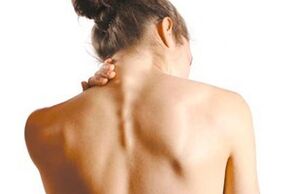
Do not forget: Treatment for cervical joint disease should be started as quickly as possible.The longer you visit the doctor, the harder it will be, the harder it will cure the disease, and while it can cause different complications.Osteochondrosis of uterine spine is very dangerous in this section with many blood vessels and nerve puppets that nourish the brain.
Any violation can cause problems with brain circulation, neurological disorders, including migraine and hypertension, affecting the heart, respiratory system, hearing, vision.
If osteoarthritis is given, it can cause more serious consequences in the form of anemia, spinal stroke or radioactive disease - a disease in which the processes formed on the spine are affected, partly or completely lack of sensitive and mobile body.But this is not the worst, because in severe musculoskeletal disease, compressed spinal cord, can cause the patient's death.
Therefore, it is very important to listen to symptoms as soon as possible and switch to an expert to help you return to a full life.And to avoid a disease such as cervical bone, you need to move more, do not avoid physical activity, weight monitor, eat properly and in a balanced disease, and also regularly see an orthopedic doctor or a living doctor.
























